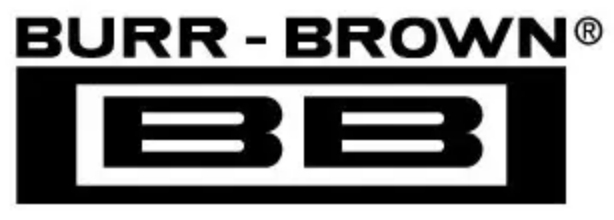FILTER RESPONSE vs FREQUENCY
+10
0
Filter Response (dB)
FILTER RESPONSE vs FREQUENCY
+10
0
Filter Response (dB)
Ripple
4-Pole Chebyshev
3dB Ripple
–10
–20
–30
–40
–50
f
C
/100
–10
–20
–30
–40
–50
f
C
/100
5-Pole Chebyshev
3dB Ripple
Ripple
f
C
/10
f
C
10f
C
f
C
/10
f
C
10f
C
Normalized Frequency
Normalized Frequency
FIGURE 2A. Response vs Frequency for Even-Order (4-
pole) 3dB Ripple Chebyshev Low-Pass Filter
Showing Cutoff at 0dB.
This advantage comes at the penalty of amplitude variation
(ripple) in the pass-band. Unlike Butterworth and Bessel
responses, which have 3dB attenuation at the cutoff fre-
quency, Chebyshev cutoff frequency is defined as the fre-
quency at which the response falls below the ripple band.
For even-order filters, all ripple is above the dc-normalized
passband gain response, so cutoff is at 0dB (see Figure 2A).
For odd-order filters, all ripple is below the dc-normalized
passband gain response, so cutoff is at –(ripple) dB (see
Figure 2B). For a given number of poles, a steeper cutoff can
be achieved by allowing more pass-band ripple. The
Chebyshev has more ringing in its pulse response than the
Butterworth—especially for high-ripple designs.
Inverse Chebyshev
(equal minima of attenuation in the stop
band). As its name implies, this filter type is cousin to the
FIGURE 2B. Response vs Frequency for Odd-Order (5-
pole) 3dB Ripple Chebyshev Low-Pass Filter
Showing Cutoff at –3dB.
Chebyshev. The difference is that the ripple of the Inverse
Chebyshev filter is confined to the stop-band. This filter type
has a steep rate of roll-off and a flat magnitude response in
the pass-band. Cutoff of the Inverse Chebyshev is defined as
the frequency where the response first enters the specified
stop-band—see Figure 3. Step response of the Inverse
Chebyshev is similar to the Butterworth.
Bessel
(maximally flat time delay), also called Thomson.
Due to its linear phase response, this filter has excellent
pulse response (minimal overshoot and ringing). For a given
number of poles, its magnitude response is not as flat, nor is
its initial rate of attenuation beyond the –3dB cutoff fre-
quency as steep as the Butterworth. It takes a higher-order
Bessel filter to give a magnitude response similar to a given
Butterworth filter, but the pulse response fidelity of the
Bessel filter may make the added complexity worthwhile.
Tuned Circuit
(resonant or tuned-circuit response). If a
two-pole band-pass or band-reject (notch) filter is selected,
the program defaults to a tuned circuit response. When band-
pass response is selected, the filter design approximates the
response of a series-connected LC circuit as shown in Figure
4A. When a two-pole band-reject (notch) response is se-
lected, filter design approximates the response of a parallel-
connected LC circuit as shown in Figure 4B.
CIRCUIT IMPLEMENTATION
In general, filters designed by this program are implemented
with cascaded filter subcircuits. Subcircuits either have a
two-pole (complex pole-pair) response or a single real-pole
response. The program automatically selects the subcircuits
required based on function and performance. A program
option allows you to override the automatic topology selec-
tion routine to specify either an inverting or noninverting
pole-pair configuration.
FILTER RESPONSE vs FREQUENCY
20
0
Normalized Gain (dB)
–20
A
MIN
–40
–60
f
STOPBAND
–80
–100
f
C
/10
f
C
10f
C
100f
C
Normalized Frequency
FIGURE 3. Response vs Frequency for 5-pole, –60dB
Stop-Band, Inverse Chebyshev Low-Pass Filter
Showing Cutoff at –60dB.
2

 BURR-BROWN [ BURR-BROWN CORPORATION ]
BURR-BROWN [ BURR-BROWN CORPORATION ]